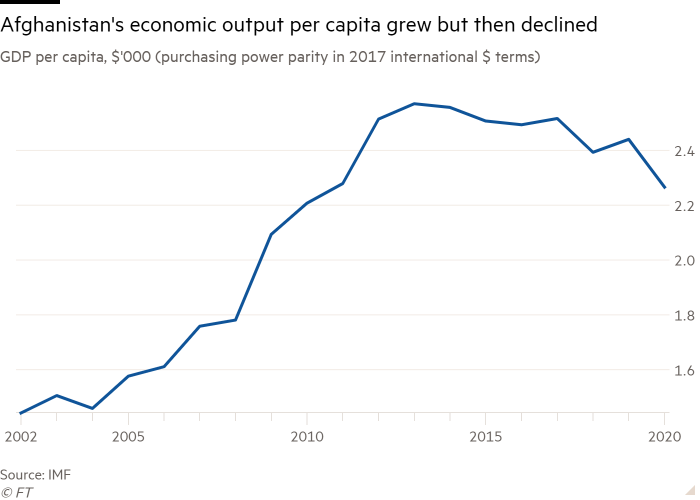In the two decades since the Taliban lost control of Afghanistan living conditions have improved markedly, including huge progress in healthcare, education, life expectancy and child mortality.
But endemic corruption and violence slowed the pace of progress, and the scaling-back of troops and aid in recent years reduced one of its biggest sources of revenue, with economic consequences.
Afghanistan’s former central bank governor Ajmal Ahmady, who fled the country last weekend as the Islamist group returned to power, told the Financial Times that anyone who played down the improvement in the lives of Afghans “belittles the change that has happened”.
But Dr Gareth Price, senior research fellow at think-tank Chatham House, said that while Afghanistan had “changed dramatically” in social terms, “none of the main domestic generators of growth — notably mineral reserves — have been significantly tapped, aside from illegal mining”.
The economy grew — but is now stagnating
Living standards benefited from a double-digit economic expansion up to the mid-2010s. But output has stagnated over the past decade as international financial support declined.
Aid flows fell from about 100 per cent of GDP in 2009 to 42.9 per cent in 2020 according to the World Bank, constraining services sector activity and employment.
International money is expected to dry up completely under the Taliban, threatening the survival of Afghanistan’s legal economy.
“With much of the…



























































